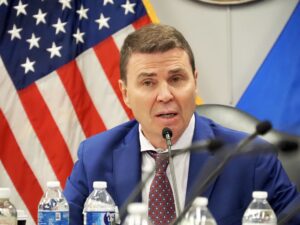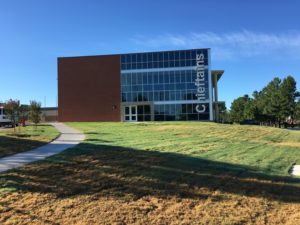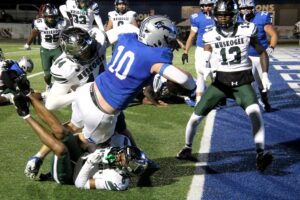During the January Board of Education meeting Superintendent Rob Armstrong gave an update on Sapulpa Public Schools district finances and the general fund mid-term allocation from the state. I later spoke with Armstrong in his office at the Washington Administration building in detail on the topic, and though the future appears bleak, there is also a lot that can be done if we “plan now; save now.”
Armstrong stressed that the administration and the BOE “must plan deliberately and strategically, or we are going to look back and wonder what happened to public education.”

During the mid-term allocation adjustments in December, online charter schools (including the controversial Epic Charter School) saw a $43 million increase, while Sapulpa Public Schools took a loss of $568,000 for the rest of the school year.
To call the state’s method of calculating funds “complicated” would be a gross understatement. It involves a complex formula with enrollment (not a tally, but a Weighted Average Daily Membership, or WADM), attendance, the number of teachers and the degrees they hold, money contributed by the local community in ad valorem taxes, and weighted categories like bilingual, economically disadvantaged, gifted, or special education students, as its main components.
A report published by the State Department of Education states that “the State Aid Funding Formula is designed to create ‘vertical and horizontal equity’ among school districts. The current formula was adopted in the early 1980s” and has not been amended for over 24 years. It is also known as the “equalization formula,” because of the ad valorem taxes (and others) that are subtracted from a district’s allocation to make them more equal to districts whose communities are not as economically profitable.
Even though Sapulpa Public Schools currently has 3,775 flesh-and-blood students in the district, the WADM formula raises that total to 6,081. Even so, this new total is significantly lower than it was in prior years. Since the 2014-2015 school year, the enrollment numbers have decreased anywhere from 40 to 140 students a year.
The State does not track how many school-age children live in each school district or where each individual child is receiving his or her education, so it is impossible to accurately gauge exactly how much of Sapulpa’s decrease in enrollment is due to families switching to virtual charter schools, such as Epic. Superintendent Armstrong maintains that the students leaving the district are a combination of those who will switch to online charter schools and those who are enticed to attend other brick-and-mortar schools that boast newer, state-of-the-art facilities for the sport or extracurricular activity of their choice.
The Superintendent is firm when he says that he is not an opponent of virtual charter schools, nor does he want to see them fail. He says he understands the future of education is about choice.
Tulsa Public Schools are not immune to enrollment, budget, and attendance problems. They closed several schools in 2019 (some brick-and-mortar and one charter) and are expected to close more in 2020 amid massive budget cuts. The cuts were made in an attempt to fix the damage caused by an unprecedented amount of students leaving in the last several years, to attend Epic Charter Schools, Jenks, Union, Sand Springs, and Broken Arrow.
During mid-term adjustments, TPS saw a $4 million decrease in funding and Union Public Schools a $1 million decrease.
If Sapulpa Public Schools can find a way to balance its budget despite the unreliability of the state’s aid, or if the district experiences a spike in enrollment, or is able to see a sliver of the $220 million the Oklahoma State Department of Education is asking for FY 2021, it should be able to function closer its highest potential and to provide all students with the best education available, whether virtual, brick-and-mortar or a combination of both. If not, then SPS could face even more setbacks. “I don’t know what the next chapter in public education looks like,” Armstrong says. “In 3 years public schools will look totally different than they have for the last 30 years.”










